After Part 1, focused on tournaments, and Part 2, focused on players, I’m glad to share with you the third and final part of the interview with our amazing photographer Jimmie48. This Part 3 covers general topics, such as technical aspects, challenging circumstances, etc. Enjoy!
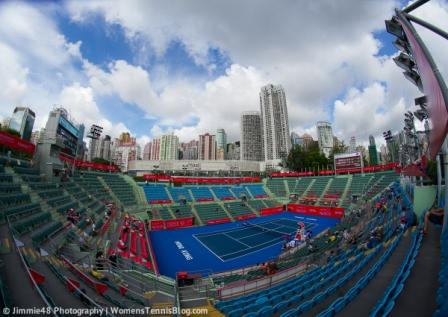
How many photos do you take per day, in total?
That’s a bit hard to specify as a first-pass of photo selection happens right after each rally, directly on the camera.
I instantly delete obvious out-of-focus ones or other shots that are not worth keeping, the less photos I bring back to the media center, the less I have to crawl through later.
During a normal match, I keep about 40-50 photos, sometimes it can be more than a 100, if a match was really long and lots of stuff was happening. All in all, I usually end up with 500-600 keepers each day, roughly 10-20% of which are actually filed and published.
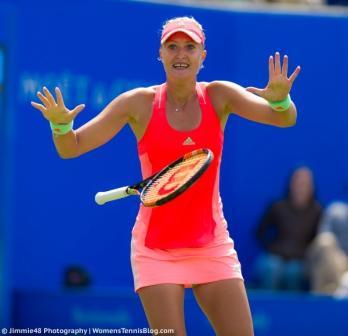
What is it that you didn’t know in the beginning and you know now when it comes to taking good tennis photos?
In the beginning, like many photographers do when they’re starting out, I was mostly obsessing about getting technically perfect photos. Perfect sharpness, lighting, good post-processing, that kind of stuff. Once you have that nailed down, you start worrying more about framing and actually capturing the essence of each situation.
Nowadays, my goal is to capture the key moments of each match with a set of photos that instantly show viewers what the match was about. This task is made extra challenging as I rarely shoot a complete match, especially not during early rounds, so it’s all about keeping up with the matches and be sure to be there at the right time, when the all important stuff happens.
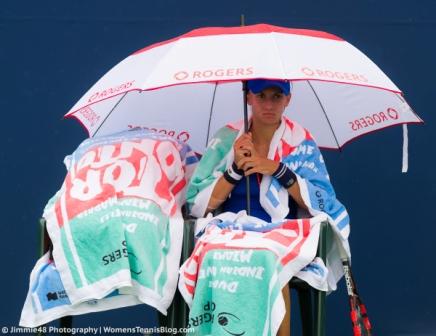
What are the most challenging aspects of being a tennis photographer?
Definitely time-management. Whenever I see football photographers on TV, I kind of envy them because they can plan-out anything. There’s just one match, two halves of 45 minutes and after that everything’s done. Tennis does not work like that, there’s always at least three things happening at once at a tournament, matches are completely unpredictable and keeping up with everything is the biggest struggle because in order to capture a moment, you first have to make sure you’re there when it happens.
This stress is intensified by the fact that I can’t just come and go as I please. Like regular spectators, photographers can’t just waltz into a match, you have to wait for a changeover to get in or leave a certain match, a fact that makes scheduling everything even more complicated.
Sometimes you’re stuck inside a match with a game that seemingly won’t end while something important is happening at the next court and you just can’t get there in time.
As a single photographer, it’s downright impossible to not miss out on anything, especially during the early rounds, so making sure to keep these missed opportunities to a minimum is the biggest challenge. Thorough planning and a bit of tennis knowledge is helpful but in the end, it often comes to down to a bit of luck (or being able to run really fast…).
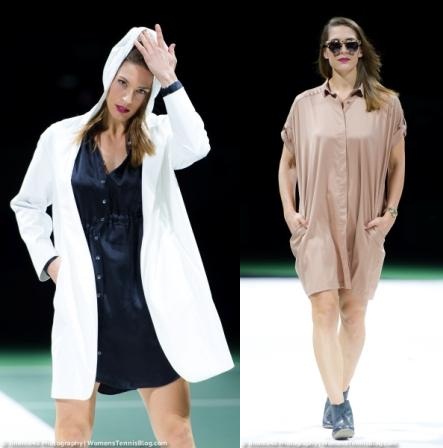
Do you prefer on-court photography, press conferences, or off-court events?
My biggest focus is definitely on-court photography. I like action and I like emotions, those are definitely the key aspects I’m after.
Personally, I’m not a big fan of women wearing plenty of make-up, so the typical dolled-up red carpet situations really aren’t doing much for me. If I’m giving the choice to either shoot Maria Sharapova wearing an expensive dress or sporting her newest Nike kit out on court, I would always opt for the letter. I know plenty of people like photos of players in dresses and it’s part of the job, so I don’t mind to shoot the occasional players party reception, but honestly, my heart’s not really into that too much.
I really like shooting press conferences too, it’s kind of my thing. Many photographers don’t care much, but with a proper lighting setup in the press room (not always the case!), these can come out really nice. Interestingly, whether or not press conference shots come out good is mostly out of my hands, as it’s all about having skilled writers asking the right questions. The best press conference shots are players reactions: smiles, laughs, a frown. Good journalists ask interesting or funny questions that get the players to react in an interesting way. That’s why I always sit next to/behind the most skilled journalist in the room wherever possible.
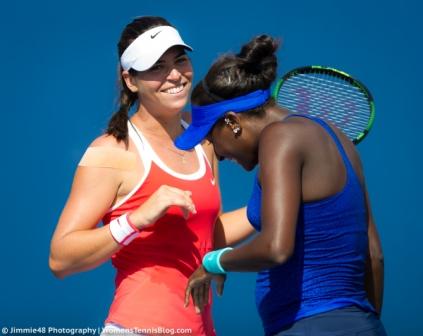
Can you describe your most difficult career day and what circumstances made it so challenging?
The most difficult day I’ve experienced so far was the big power-outage in Montreal last year. The part of town the tournament site is in was out of power for several hours, leading to quite chaotic work conditions on site.
While the tennis continued without any electronic helpers and I managed to keep shooting thanks to an extra battery, nobody was allowed into the media center as long as the power was out.
Locked away from the desk and my computer, I wasn’t able to edit or file any photos, leaving me with a big batch of unprocessed shots in the evening – a quite frustrating experience that thankfully was the same for everyone else.
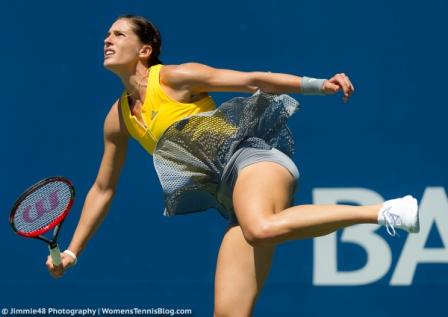
What was the single best experience in your career of a tennis photographer?
I don’t think I can nail down a single instance really. It’s the small things that are rewarding and fun. Capturing the all-important moment of a match, being the only one to get a certain shot because of clever positioning, having managed to shoot most matches during a stressful day, that’s what keeps me going.
Also, a very rewarding aspect is the stream of constant feedback one receives thanks to social media. Every photographer wants his or her work to be seen and enjoyed and today’s technology makes it easy to instantly hear from your audience, providing the extra bit of motivation that’s sometimes needed when there’s yet another match to shoot after 10+ hours of tennis.
Last but not least, I’m not just a tennis photographer, but I also have a big personal interest in the sport, so being able to work in this environment is a very rewarding experience day in and day out, not many people get to make their passion their profession after all!
I hope we’ve given you a comprehensive insight into the job of a tennis photographer. Tell us in the comments if you enjoyed this series!



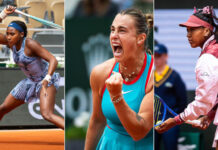

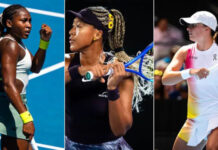
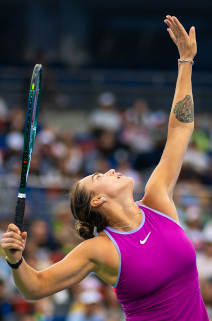

I really enjoyed this series. I envy Jim as he gets to travel and capture tennis moments. Thank you for wonderful photos and insights on this interview series. We got a glimpse of what it’s like to be a tennis photographer. 🙂
I came to this idea as I am also fascinated by Jimmie48’s job and I’m glad that it turned out to be just as interesting to the readers. Even the WTA mentioned it in one of their articles.
Sou fotógrafo há mais de 20 anos, estou começando a fotografar tennis e me inspiro em matérias como essas para buscar teorias e coloca las em prática. Parabéns ao repórter e ao fotógrafo.